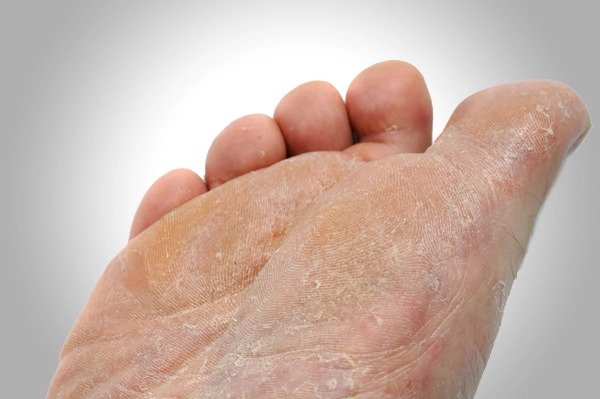What is athlete’s foot?
Athlete’s foot is a fungal infection of the skin that can lead to intense itching, cracked, blistered or peeling areas of skin, redness and scaling. It can occur on moist, waterlogged skin, usually between the fourth and fifth toes initially, or on dry, flaky skin around the heels or elsewhere on the foot. Large painful fissures can also develop and the condition can also spread along all five toes and sometimes to the soles of the feet if left untreated.
What causes it?
It is caused by a number of fungal species that you can pick up from someone else shedding infected skin, typically in communal areas such as pools, showers and changing rooms, or anywhere that you walk around barefoot. Athlete’s foot can also be passed on directly by person to person contact, although people who sweat more are more prone to infection.
Once your feet have been contaminated, the warm, dark and sweaty environment of feet in shoes or trainers provides the ideal breeding ground for the fungus. However, athlete’s foot also occurs in dry, flaky areas. It’s quite common in summer with sandal wearers. The sun makes your skin dry out so it loses its natural protective oils. This combined with the constant trauma from sandals makes your feet more prone to infection.
Who gets it?
It’s not called athlete’s foot for nothing! Walking barefoot around swimming pools and spending your life in trainers may make you more likely to pick it up, but you do not need to be an athlete to get this condition.
Is it serious?
If left untreated, the fungus can spread to the toe nails, causing thickening and yellowing of the nail, which is much harder to treat. Fungal infections are highly contagious and can spread to anywhere on your skin, including your scalp, hands and even your groin. This is especially likely if you use the same towel for your feet as for the rest of your body.
What are the treatments?
It is always best to treat this condition as soon as symptoms are first noticed. Treatments depend on what type of athlete’s foot you have. Over-the-counter remedies are always a good starting point, and your GP or podiatrist can also recommend suitable treatments.
For athlete’s foot where the skin conditions are dry
If the condition occurs on a dry area of the foot, such as your heel, you need to restore moisture by rubbing in an anti-fungal cream or spray, sometimes combined with a steroid cream (all from your pharmacist). You must remember to wash your hands thoroughly afterwards, or use disposable gloves so you don’t get the fungus on your hands.
For athlete’s foot where the skin conditions are moist
This requires a different treatment. Wash your feet in water as cold as you can bear (hot water only makes your feet fungus-friendly) then dry them thoroughly, preferably with a separate towel or even kitchen roll. It is important to dab your feet dry rather than rub them, as rubbing tends to remove any healing skin. Although the skin may appear flaky and dry, never use moisturiser between your toes, and avoid powders as they can cake up and irritate skin. A spirit-based preparation such as surgical spirit can help – it’s cooling, soothing and antiseptic. This may sting a little but will help the moisture evaporate and allow the skin to heal. Only use on unbroken skin.
In severe cases, an anti-fungal tablet may be prescribed. However, tablets are not suitable for everyone, for example pregnant women, so always check with your pharmacist and follow the instructions carefully.
You should also avoid using anti-fungal powders between the toes, although they’re good for dusting inside shoes and trainers.
The mistake most people make is to stop their hygiene regime, shoe rotation and/or medication once their symptoms have gone. Although symptoms may disappear after several days or weeks of treatment, the fungus can lie dormant and could eventually reappear in the right environment. Some products require continued treatment for many weeks – always follow the instructions fully. Also, be alert to symptoms so that you can deal with any problems straight away.

